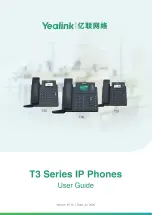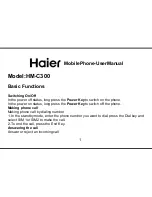
130
wireless phones sometimes do because of electromagnetic
energy emitted by the phone's antenna, backlight, or other
components. Your phone is compliant with FCC HAC regulations
(ANSI C63.19- 2011). While some wireless phones are used near
some hearing devices (hearing aids and cochlear implants), users
may detect a buzzing, humming, or whining noise. Some hearing
devices are more immune than others to this interference
noise and phones also vary in the amount of interference they
generate. The wireless telephone industry has developed a
rating system for wireless phones to assist hearing device users
in finding phones that may be compatible with their hearing
devices. Not all phones have been rated. Phones that are rated
have the rating on their box or a label located on the box. The
ratings are not guarantees. Results will vary depending on the
user's hearing device and hearing loss. If your hearing device
happens to be vulnerable to interference, you may not be able
to use a rated phone successfully. Trying out the phone with
your hearing device is the best way to evaluate it for your
personal needs.
This phone has been tested and rated for use with hearing aids
for some of the wireless technologies that it uses. However, there
may be some newer wireless technologies used in this phone
that have not been tested yet for use with hearing aids. It is
important to try the different features of this phone thoroughly
and in different locations, using your hearing aid or cochlear
implant, to determine if you hear any interfering noise. Consult
your service provider or the manufacturer of this phone for
information on hearing aid compatibility. If you have questions
FOR YOUR SAFETY
Summary of Contents for AT&T Maven 3
Page 1: ...User Guide ...
Page 146: ......















































